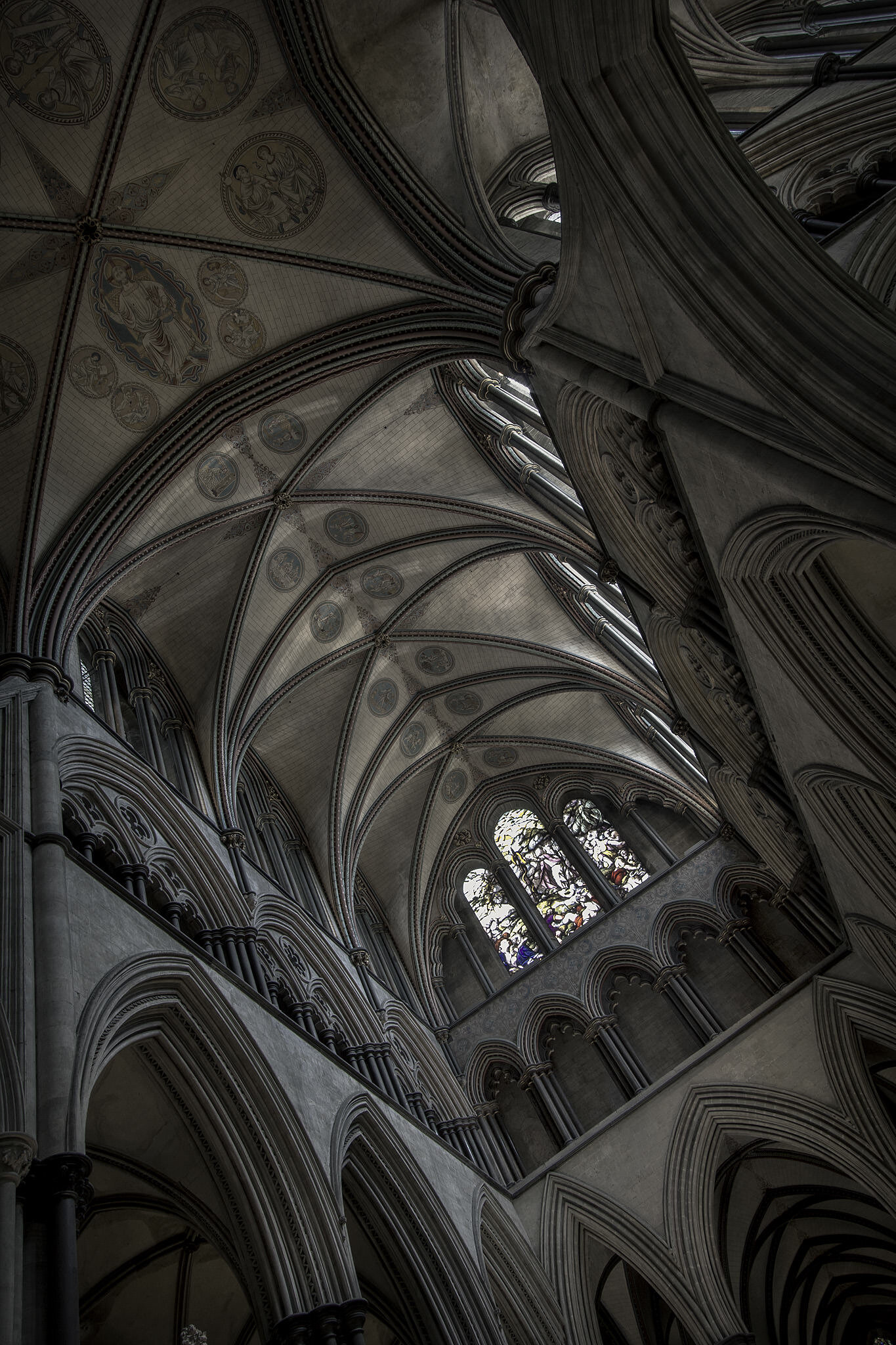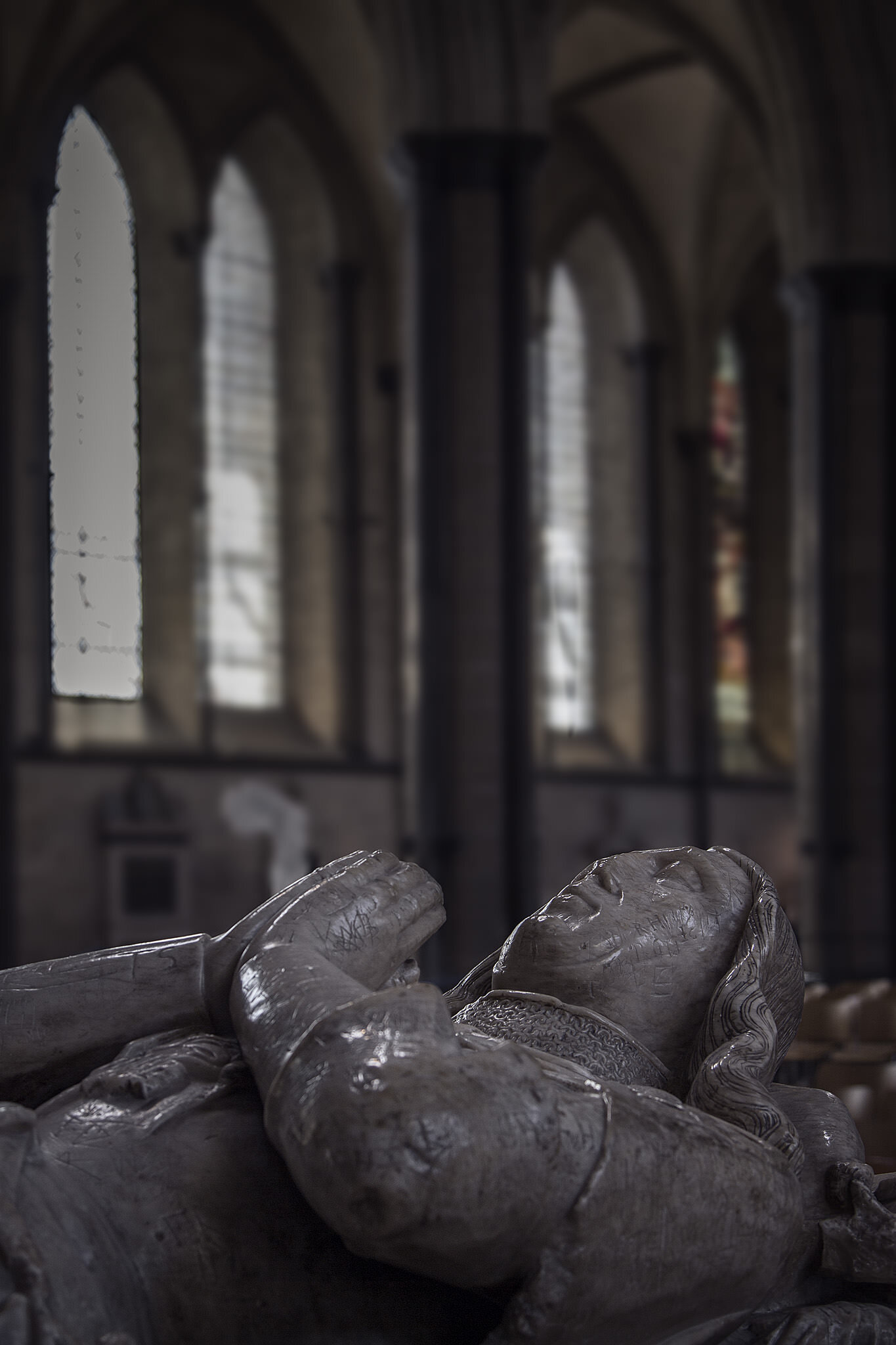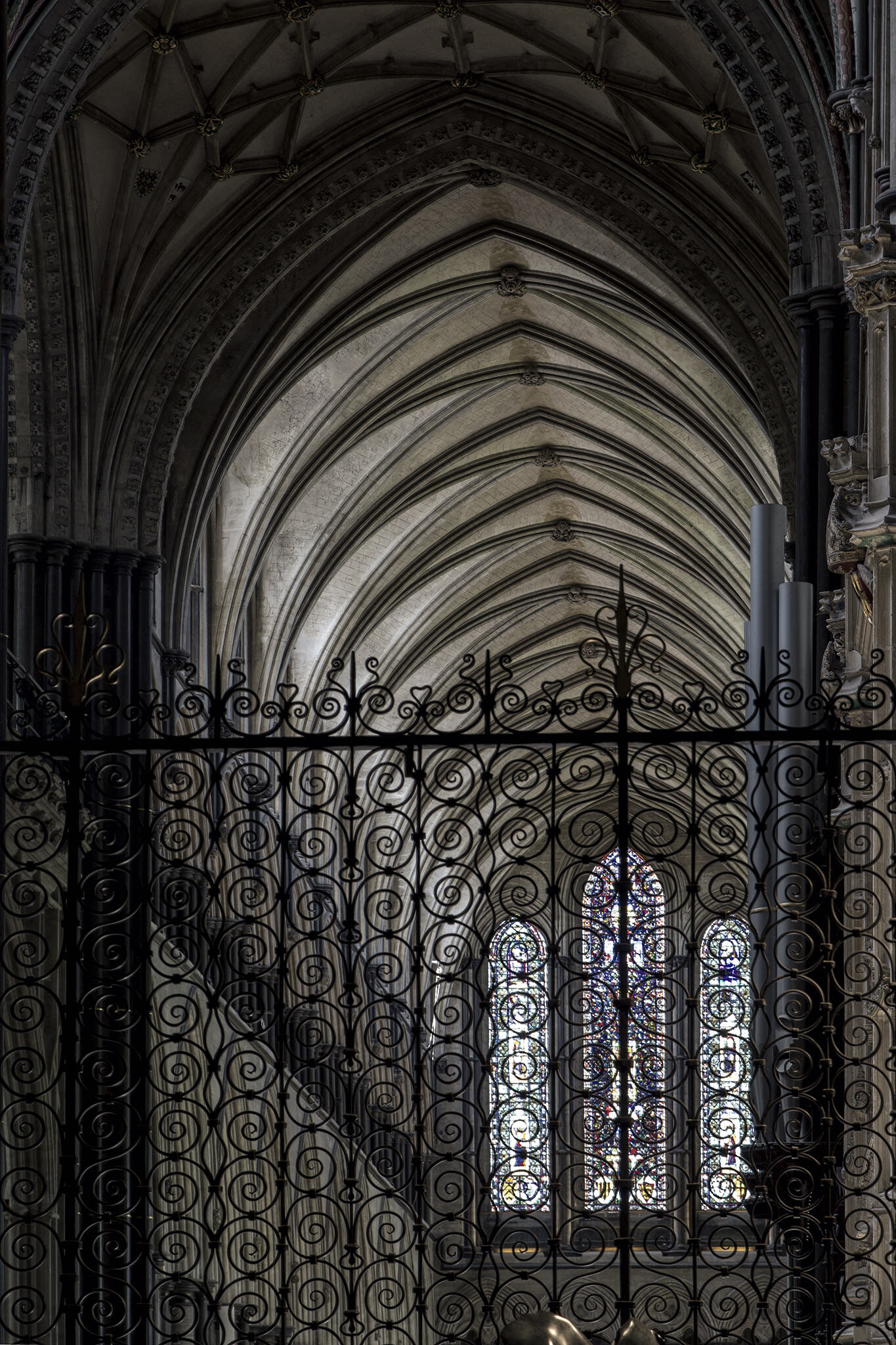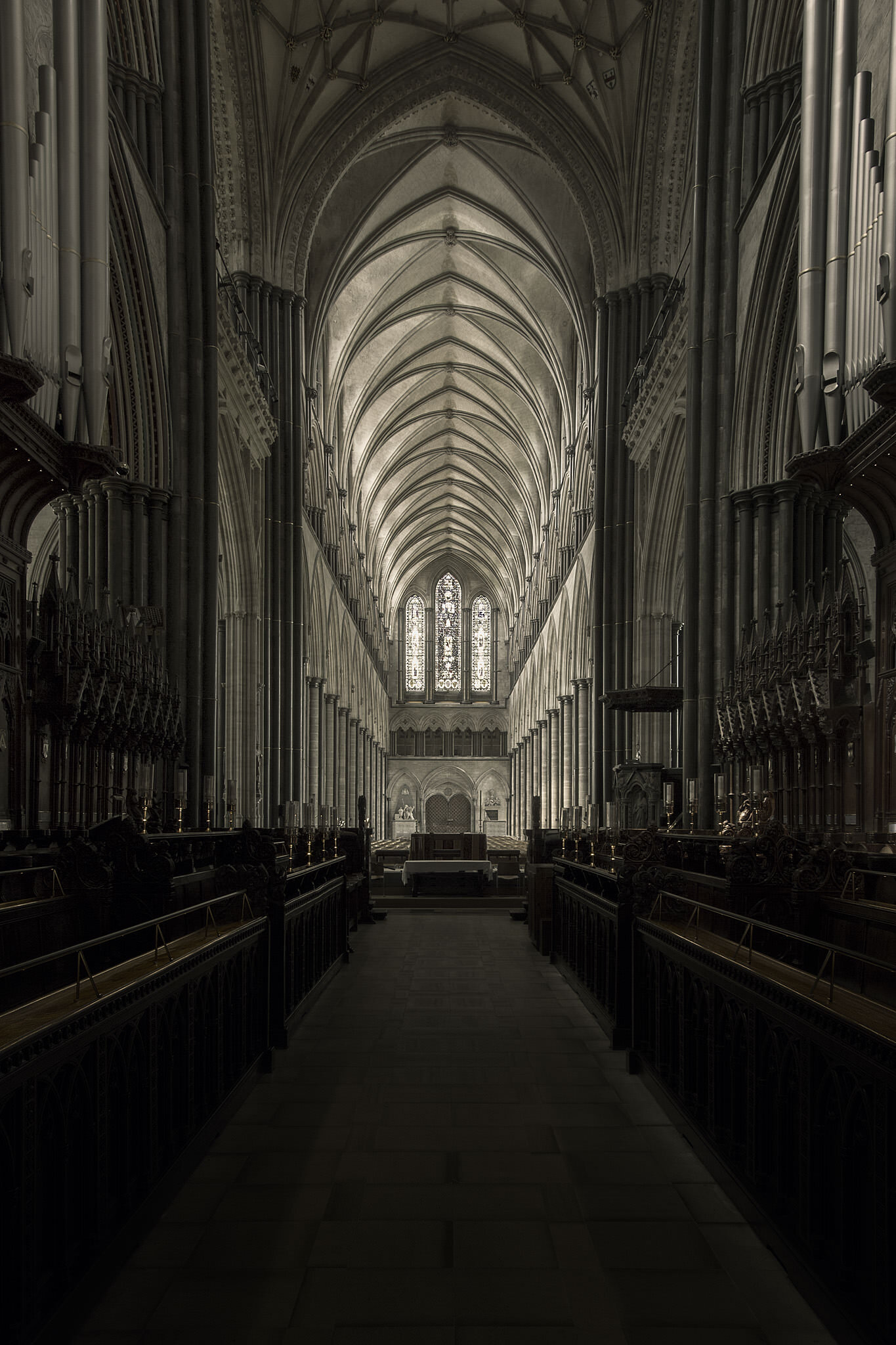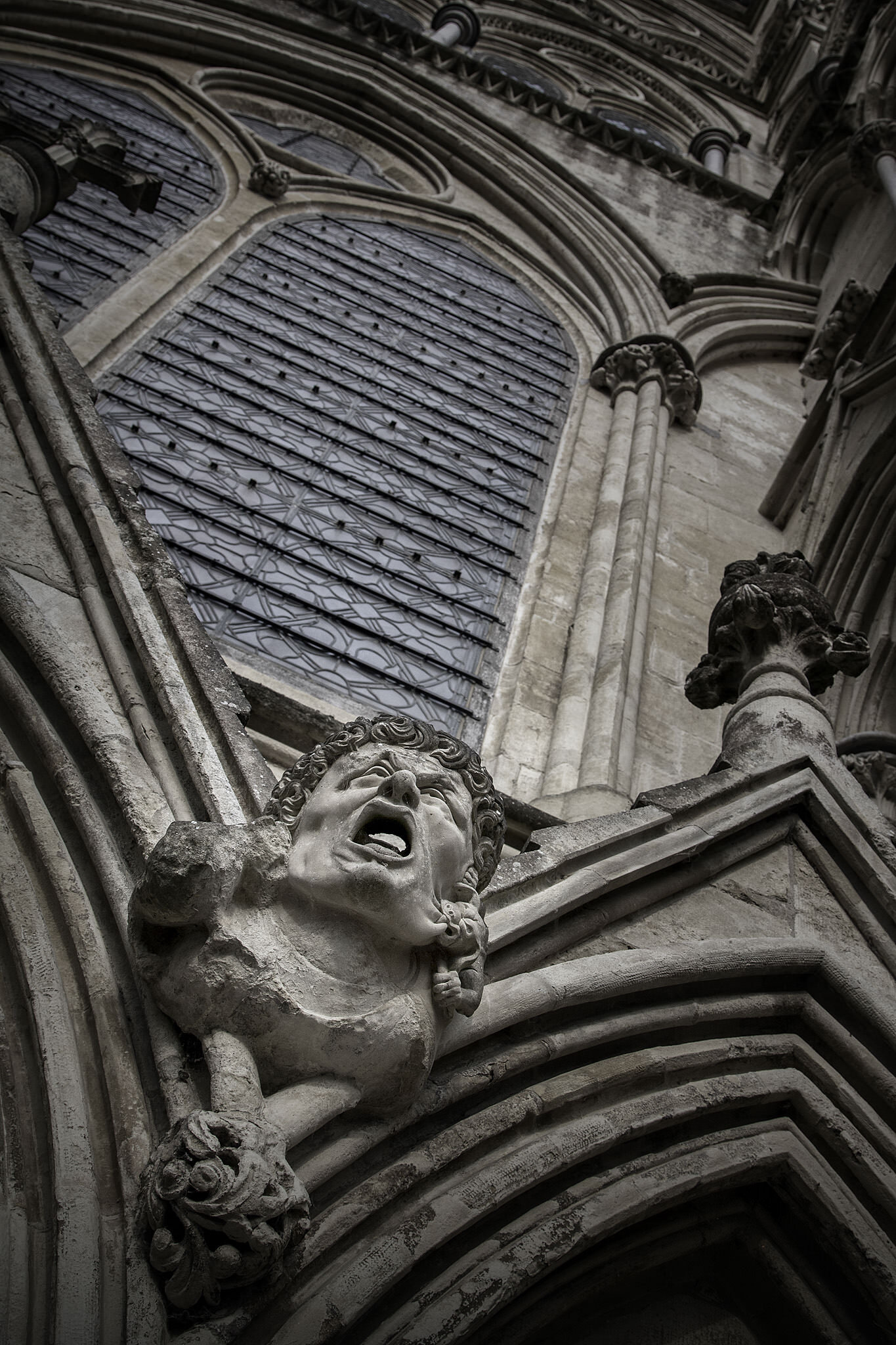Salisbury Cathedral, South West, England

Salisbury Cathedral had an unusual beginning, as it was first built in Old Sarum, a few miles to the north of Salisbury. Building work began in Old Sarum in 1075, under Bishop Herman. The Cathedral there was being built within the castle enclosure. Building work came to an end in 1092 and soon after the work ended, the building was struck by lightning.
The origins of Salisbury Cathedral go back even further, when in the late Anglo-Saxon period the Diocese for Wiltshire and Berkshire were based at Ramsbury, then in 1058 this was joined to the Diocese for Dorset, based at Sherborne Abbey. After the Norman Conquest the See was transferred to Old Sarum. Old Sarum itself had been a large Iron Age hill fort, within which it was decided to build a Norman Castle.
The property held by the Cathedral greatly expanded, as did the Cathedrals wealth, in the twelfth and thirteenth centuries, especially during the reign of Henry I, while the clergy remained at Old Sarum until after the death of King John in 1216.
The Cathedral was built and being used at Old Sarum, however at some point before 1219 it was decided to move the clergy and start all over again by building an entirely new Cathedral at Salisbury. It is said that the clergy and the castle garrison did not get along and had repeated disagreements. The church complained that soldiers harassed churchmen and parishioners. If that is the case, then the situation must have been quite unlivable to undertake such an endeavor.
What we do know, is that in 1219 the churchyard where the Cathedral would be built was consecrated, with the foundation stones for the new site being laid in 1220.
The first person to be buried in Salisbury Cathedral, was William Longespee, Third Earl of Salisbury. He was the illegitimate son of King Henry II. He had been present at the laying of the foundation stones at Salisbury Cathedral in 1220 and died in 1226. Although his surname may have us come up with our own guesses, it is believed to be a reference to his great size and the size of the weapons he wielded.
In 1791 his tomb was opened and when his skull was examined, the remains of a well-preserved rat were found inside. The rat’s remains were found to contain traces of arsenic, perhaps having been used as rat poison. The rat now has his own display in Salisbury’s Chapter House.
Salisbury Cathedral is built on foundations only four feet deep, due to the high water table. Its spire is now the tallest in Britain at 404 feet. It gained this title in 1549, when the spire at Lincoln Cathedral collapsed. Salisbury’s spire would surely have suffered the same fate were it not for the addition of buttresses, bracing arches, anchor irons and tie beams being added over the centuries.
The reason for the spire’s problems is simple- it was never intended to be there at all, the Cathedral’s original design calling only for a tower. However, it was decided in the early part of the 14th Century to add an extra two stories onto the tower, then the spire was added on top. This added over 6,000 tons of weight to the existing structure, for which it had never been designed.
Salisbury Cathedral’s choir stalls are some of the oldest in England. In June of 1236, Henry III gave the Cathedral some oak trees from his forest at Chippenham, in order that they could 'make stalls in their church'. These choir stalls, all 106 of them have survived, they are the largest and earliest, complete set of choir stalls in England.
The Cathedral was built from start to finish in the 13th Century; therefore it was able to achieve a more harmonious and cohesive appearance than many other Cathedrals. This also meant that it would possess just one primary style of architecture- the newly fashionable Early English Gothic style, which made full use of the pointed arch.
Salisbury has a large Cathedral close, which is a wide area of grass and houses, around the cathedral. At Salisbury the grassed area is larger than at many other Cathedrals. The precinct was effectively a large gated community, inside a medieval town. At Canterbury this gated system is still in operation, where the gates close at a certain hour and reopen again in the morning. The precinct would have contained the Bishops Palace and Canon’s lodgings, within a high stonewall. Salisbury had four gates, which were locked at night.
Only four of the original copies of the Magna Carta survive today and one of them is owned by Salisbury Cathedral. The Magna Carta (Latin for Great Charter),was signed by King John at Runneymede in 1215, on the insistence of his Barons. Once the document was signed and sealed, 10 of the 13 copies were to be safely held at various locations. One of these 10 was sent to the Cathedral at Old Sarum and made its way to Salisbury when the cathedral relocated.
It is somewhat amazing; that for over 800 years the Cathedral has managed to protect the Magna Carta, especially when you consider it is even at risk today. In October of 2018, a 45 year old man was arrested for attempting to steal the Magna Carta from the Cathedral. He smashed the glass case which contained the document by using a hammer. Apparently he did not expect it to be alarmed but the alarm was sounded and he was arrested.
The ceiling paintings date from the 13th Century and were planned and painted at the Cathedral's origins. They have been restored and even repainted where necessary from sketches and descriptions, having been whitewashed over previously. At the end of the 18th Century, just before the whitewashing, the original paintings were recorded by the artist Jacob Schnebblie, employed by the Society of Antiquaries. Therefore we can know with some certainty, that anywhere that the original painting could not be fully recovered under the coat of limewash what was there originally.
The columns in the Cathedral are of Purbeck marble and are solid stone, whereas previously, large columns were rubble filled stone drums which took up more space. The pointed arch changed the method of distributing weight, this allowed for larger door and window openings, which allowed more light into the Cathedral, in a way which had not previously been possible. Interestingly and confusingly, Purbeck Marble is not marble at all, it is in fact fossiliferous limestone, found on the Isle of Purbeck in Dorset.
Lord John Cheney was buried in Salisbury Cathedral, as he was the brother of the Dean of Salisbury. However, he had also been a Bodyguard and Chief Henchman to King Edward IV, Richard III and Henry VII. He fought for the Lancastrians at the Battle of Bosworth and was unhorsed by a blow from Richard III. He died in 1499.
The cloisters were begun in 1240 and surround a large green. They are also the largest medieval cloisters in England.
New tracery was used in the windows of the cloister arcade with glass in the iron frames in the upper lights.


